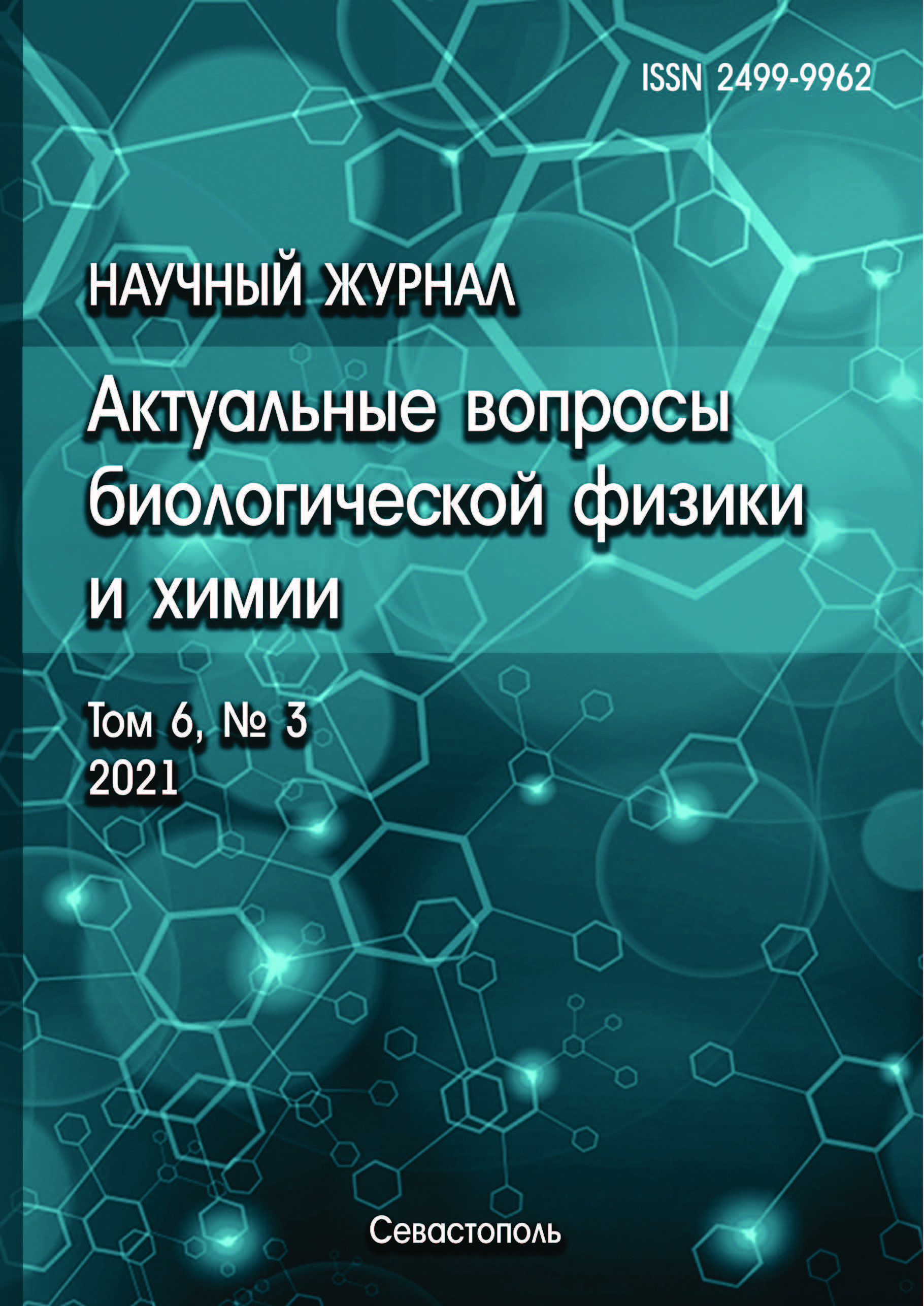Существующая литература демонстрирует наличие противоопухолевого действия низкотемпературной плазмы как in vitro на разных клеточных линиях, так и in vivo. Данное направление интенсивно изучается в последнее время, однако, исследования осложняются ввиду большого разнообразия объектов исследования и недостаточной изученности плазменных струй. В данной работе изучалось влияние низкотемпературной плазменной струи на пролиферацию опухолевых клеток HeLa как в различных режимах обработки клеточной культуры, так и при вариации параметров источника плазмы. Низкотемпературные плазменные струи были получены на основе импульсного электрического разряда, поддерживаемого в потоке воздуха при атмосферном давлении. С целью поиска оптимальных условий варьировались частота следования импульсов напряжения от 0,5 до 4,2 кГц, время экспозиции от 30 до 240 с, количество повторов обработки и длительность паузы между повторами (10 минут, 24 часа, 72 часа). Было показано, что данный тип физического воздействия способен подавлять рост опухолевых клеток до 85% по сравнению с группой контроля. Данный эффект зависит как от частоты следования импульсов тока разряда, так и от времени воздействия. Полученные данные свидетельствуют о перспективности использования низкотемпературных плазменных струй для подавления пролиферации опухолевых клеток.
низкотемпературная плазма, разряд в потоке газа, плазменная струя, онкология, пролиферация, HeLa
1. Новости онкологии: [Электронный ресурс]. URL: http://www.oncology.ru/news/2019/10/14/ (Дата обращения: 10.02.2021). @@Oncology news (In Russ.)
2. Park G.Y., Park S.J., Choi M.Y., Koo I.G., Buyn J.H., Hong J.H., Sim J.Y., Collins G.J., Lee J.K. Atmospheric-pressure plasma sources for biomedical applications. Plasma Sources Sci Technol., 2012, vol. 21, no. 4, p. 043001. doi:https://doi.org/10.1088/0963-0252/21/4/043001 EDN: https://elibrary.ru/PGMBWD
3. Korolev Y.D., Frants O.B., Landl N.V., Geyman V.G., Matveev I.B. Nonsteady-state gas-discharge processes in plasmatron for combustion sustaining and hydrocarbon decomposition. IEEE Trans. Plasma Sci., 2009, vol. 37. doi:https://doi.org/10.1088/2399-6528/ab361a EDN: https://elibrary.ru/ULWBRX
4. Lu X., Naidis G.V., Laroussi M., Reuter S., Graves D.B., Ostrikov K. Reactive species in non-equilibrium atmospheric-pressure plasmas: Generation, transport, and biological effects. Physics Reports, 2016, vol. 630, no. 1. doi:https://doi.org/10.1016/j.physrep.2016.03.003 EDN: https://elibrary.ru/WTANPP
5. Laroussi M. Low-temperature plasma jet for biomedical applications: a review. IEEE Trans. Plasma Sci., 2015, vol. 43, no. 703. doi:https://doi.org/10.1109/TPS.2015.2403307 EDN: https://elibrary.ru/UQTJIR
6. Dayun Y., Haijie X., Wei Z., Niki N., Lijie Grace Z., Ka B., Keidar M. The role of aquaporins in the anti-glioblastoma capacity of the cold plasma-stimulated medium. Journal of Physics D: Applied Physics, 2017, vol. 50, no. 055401. doi:https://doi.org/10.1088/1361-6463/aa53d6 EDN: https://elibrary.ru/YXBQRD
7. Isbary G., Koritzer J., Mitra A. et al. Ex vivo human skin experiments for the evaluation of safety of new cold atmospheric plasma devices. Clinical Plasma Medicine, 2013, vol. 1. doi:https://doi.org/10.1016/J.CPME.2012.10.001 EDN: https://elibrary.ru/RHQVPD
8. Graves D.B. Low temperature plasma biomedicine: A tutorial review. Phys. Plasmas, 2014, vol. 21. doi:https://doi.org/10.1063/1.4892534 EDN: https://elibrary.ru/UQXUFF
9. Akishev Y.S. Non-thermal plasma at atmospheric pressure and its opportunities for applications. Izv. Vyssh. Ucheb. Zaved., Khim. Khim. Tekhnol, 2019, vol. 62, no. 26. doi:https://doi.org/10.6060/ivkkt.20196208.5908 EDN: https://elibrary.ru/OEUOGV
10. Zimu Xu., Yan Lan, Jie Ma, Jie Shen et.al. Applications of atmospheric pressure plasma in microbial inactivation and cancer therapy: a brief review. Plasma Sci. Technol., 2020, vol. 22. doi:https://doi.org/10.1088/2058-6272/ab9ddd
11. Hirst A.M., Frame F.M., Arya M., Maitland N.J., O’Connell D. Low temperature plasmas as emerging cancer therapeutics: the state of play and thoughts for the future. Tumor Biology, 2016, vol. 37. doi:https://doi.org/10.1007/s13277-016- 4911-7 DOI: https://doi.org/10.1007/s13277-016-4911-7; EDN: https://elibrary.ru/XPXUGH
12. Schneider C., Arndt S., Zimmermann J.L., Li Y. et al. Cold atmospheric plasma treatment inhibits growth in colorectal cancer cells. Biological Chemistry, 2018. doi:https://doi.org/10.1515/hsz-2018-0193
13. Keidar M., Walk R., Shashurin A., Srinivasan P., Sandler A., Dasgupta S., Ravi R., Guerrero-Preston R., Trink B. Cold plasma selectivity and the possibility of a paradigm shift in cancer therapy. British journal of cancer, 2011, vol. 105, no. 9. doi:https://doi.org/10.1038/bjc.2011.386 EDN: https://elibrary.ru/PHWBUJ
14. Utsumi F., Kajiyama H., Nakamura K., Tanaka H. et al. Effect of indirect nonequilibrium atmospheric pressure plasma on anti-proliferative activity against chronic chemo-resistant ovarian cancer cells in vitro and in vivo. PloS one, 2013, vol. 8, no. 12. DOI:https://doi.org/10.1371/journal.pone.0081576 EDN: https://elibrary.ru/SPCDFV
15. Tanaka H., Mizuno M., Katsumata Y., Ishikawa K., Kondo H. et al. Oxidative stress-dependent and -independent death of glioblastoma cells induced by non-thermal plasma-exposed solutions. Scientific Reports, 2019, vol. 9. doi:https://doi.org/10.1371/journal.pone.0247589
16. Miller V., Lin A., Fridman A. Why Target Immune Cells for Plasma Treatment of Cancer. Plasma Chemistry and Plasma Processing, 2016, vol. 36. doi:https://doi.org/10.1007/s11090-015-9676-z. EDN: https://elibrary.ru/HSFDJS
17. Fridman A. Plasma Chemistry (Cambridge University Press, New York), 2008.
18. Yan D., Sherman J.H., Cheng X., Ratovitski E., Canady J., Keidar M. Controlling plasma stimulated media in cancer treatment application. Applied Physics Letters, 2014, vol. 105, no. 22. doi:https://doi.org/10.1063/1.4902875 EDN: https://elibrary.ru/UQPTPJ
19. Ishaq M., Han Z.J., Kumar S., Evans M.D., Ostrikov K. Atmospheric-pressure plasma-and TRAIL-induced apoptosis in TRAIL-resistant colorectal cancer cells. Plasma Processes and Polymers, 2015, vol. 12, no. 6. doi:https://doi.org/10.1002/ppap.201400207 EDN: https://elibrary.ru/UQTKAT
20. Gamaleev V., Iwata N., Ito G., Hori M., Hiramatsu M., M. Ito. Scalable treatment of flowing organic liquids using ambient-air glow discharge for agricultural applications. Appl. Sci., 2020, vol. 10. doi:https://doi.org/10.3390/app10030801 EDN: https://elibrary.ru/DOTBCE
21. Kawasaki T., Mitsugi F., Koga K., Shiratani M. Local supply of reactive oxygen species into a tissue model by atmospheric-pressure plasma-jet exposure. J. Appl. Phys., 2019, vol. 125. doi:https://doi.org/10.1063/1.5091740 EDN: https://elibrary.ru/UZLJSM
22. Korolev Y.D., Frants O.B., Landl N.V., Kasyanov V.S., Galanov S.I., Sidorova O.I., Kim Y., Rosocha L.A., Matveev I.B. Propane oxidation in a plasma torch of a low-current nonsteady-state plasmatron. IEEE Trans. Plasma Sci., 2012, vol. 40. doi:https://doi.org/10.1109/TPS.2011.2176557 EDN: https://elibrary.ru/PDWOHD
23. Tolosa L., Donato M.T., Gomez-Lechon M.J. General Cytotoxicity Assessment by Means of the MTT Assay Protocols in In Vitro Hepatocyte Research. Methods Mol Biol, 2015, vol. 1250. doi:https://doi.org/10.1007/978-1-4939-2074-7_26










